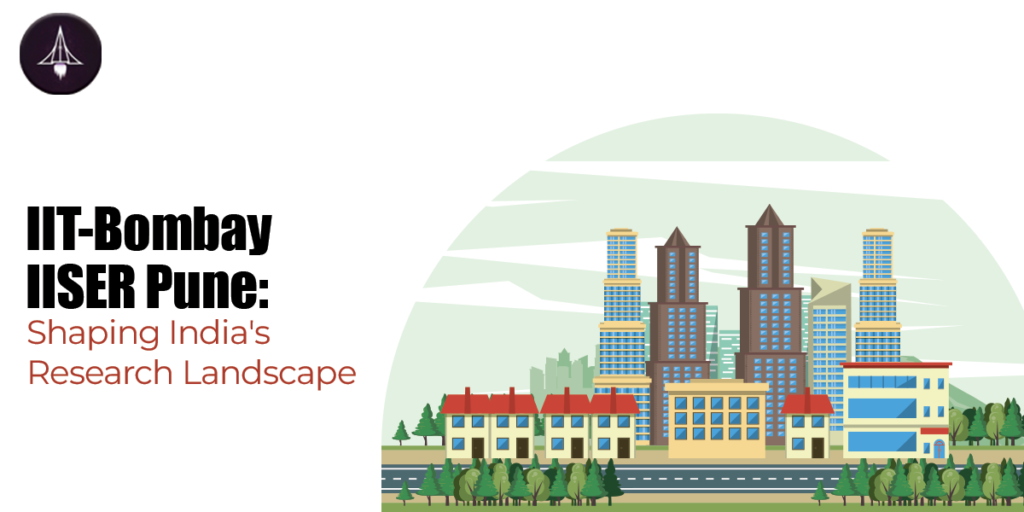IIT-Bombay and IISER Pune: Driving Innovation as New ANRF Centers
In an important step in strengthening the Indian research ecosystem, IIT-Bombay and IISER Pune foram have appointed Advanced National Research Foundation (ANRF) Honorary Research Centres. This historic initiative aims to enhance capacity in research at universities and government institutions throughout the country Commitment of ₹100 Crore with Excellence.
Under the purview of the ANRF structure, IIT-Bombay and IISER Pune will each receive $100 million over the next five years to promote thematic research. This funding is subject to departmental approval and comes at a critical time for these institutions. Both institutions have been recognized for their contributions to science and technology.
The announcement came from Abhay Karandikar, Secretary, Department of Science and Technology (DST), during a lecture at Mumbai University. Ahead of the inaugural ceremony, Karandikar emphasized the government’s commitment to the advancement of basic science and detailed plans to provide grants of Rs 1 crore to Rs 5 crore to principal researchers over three years.
In this Blog we will try to shadow India’s National Innovation agenda.

Multidisciplinary research through T-Hubs
The ANRF initiative sees a future where collaboration is key. As per this vision, 31 institutes across India have been identified as T-Hubs. These centers will use the model. Hub-Spoke-Spike which integrates knowledge in various fields such as physics, computer science engineering and materials science. This approach guarantees easier cooperation between the centers. Regional projects and individual researchers promote resource sharing and interdisciplinary innovation. Holding on to free space is not a technological development.
Bridging Gaps in Technology Development
India has made remarkable progress in terms of research output. With publications increasing from 78,000 in 2012 to more than 2.07 lakh by 2024. The country currently ranks among the top five in the world in 45 of 64 critica; research areas, in agreement with the Australian Strategic Policy Institute. Despite this progress, Karandikar recognizes gaps in technology development. ANRF aims to meet these challenges by promoting industry collaboration and supporting deep tech startups. Especially in the beginning Strengthen research through funding.
Strengthening Research Through Funding
The ANRF initiative comes with an allocation of R14,000 crore, along with an ambitious plan to create a Rs 1 lakh crore corpus to support innovation. The government has doubled its primary research deficit to 0.7% of GDP. While private sector participation remains at approximately 36.4%, ANRF’s mission is to bridge this funding gap. It works closely with national missions such as the Quantum Technology Mission. and Cyber missions.
Vision for the future
In addition to funding, ANRF aims to create a research-friendly environment. By reducing bureaucratic obstacles it allows scientists and inventors to focus on their work. “The future of Indian science is brighter than ever,” concluded Karandikar, emphasizing the government’s commitment to promoting innovation and collaboration.
Celebrating the Conquest: MU Conference
Mumbai University holds its annual conference in January. Held at the historic Sir Cowasjee Jehangir Convocation Hall, it was part of the Commemorative Week for Indian Scholars. There were 1,64,465 graduates, with 85,511 women representing the majority. Governor of Maharashtra and University Chancellor CP Radhakrishnan presided over the ceremony with Abhay Karandikar presiding over the ceremony.
A new era for Indian science and technology.
The appointment of IIT-Bombay and IISER Pune as ANRF centers is a testament to India’s growing commitment to strengthening its research infrastructure. With a large amount of capital Collaboration from various disciplines and vision for technological excellence. These institutions are therefore poised to lead the way in promoting innovation and tackling key challenges in science and technology.
This new chapter in India’s scientific journey is not just about funding. But it’s also about inspiring a research culture. working together and groundbreaking discoveries that will shape the future of the country.
About us: SciAstra
SciAstra is a team of scientists and research scholars from the top research institutes around the world like Oxford, Harvard, Cambridge, and so on. Our vision is to promote critical thinking and scientific temperament by helping students in their careers in science.
We offer many free and paid courses where our mentors from the top research institutes like IISER, NISER, IACS, CMI,ISI IISC Bangalore, etc teach students in live classes, with study materials, mock tests, books, and everything needed. We have taught more than 10,000 students already since 2021 and achieved over 1000 selections with AIR 1, 7,10, 12, and 13 in IISc Bengaluru, IISERs, NISER, IACS, and so on. If you are looking to prepare for IAT / NEST 2024, you can check out our courses and get access to live classes, recorded lectures, study material, mock tests, doubt-clearing classes, and much more!
To know more about us, click here OR download the SciAstra App from the Play Store!





